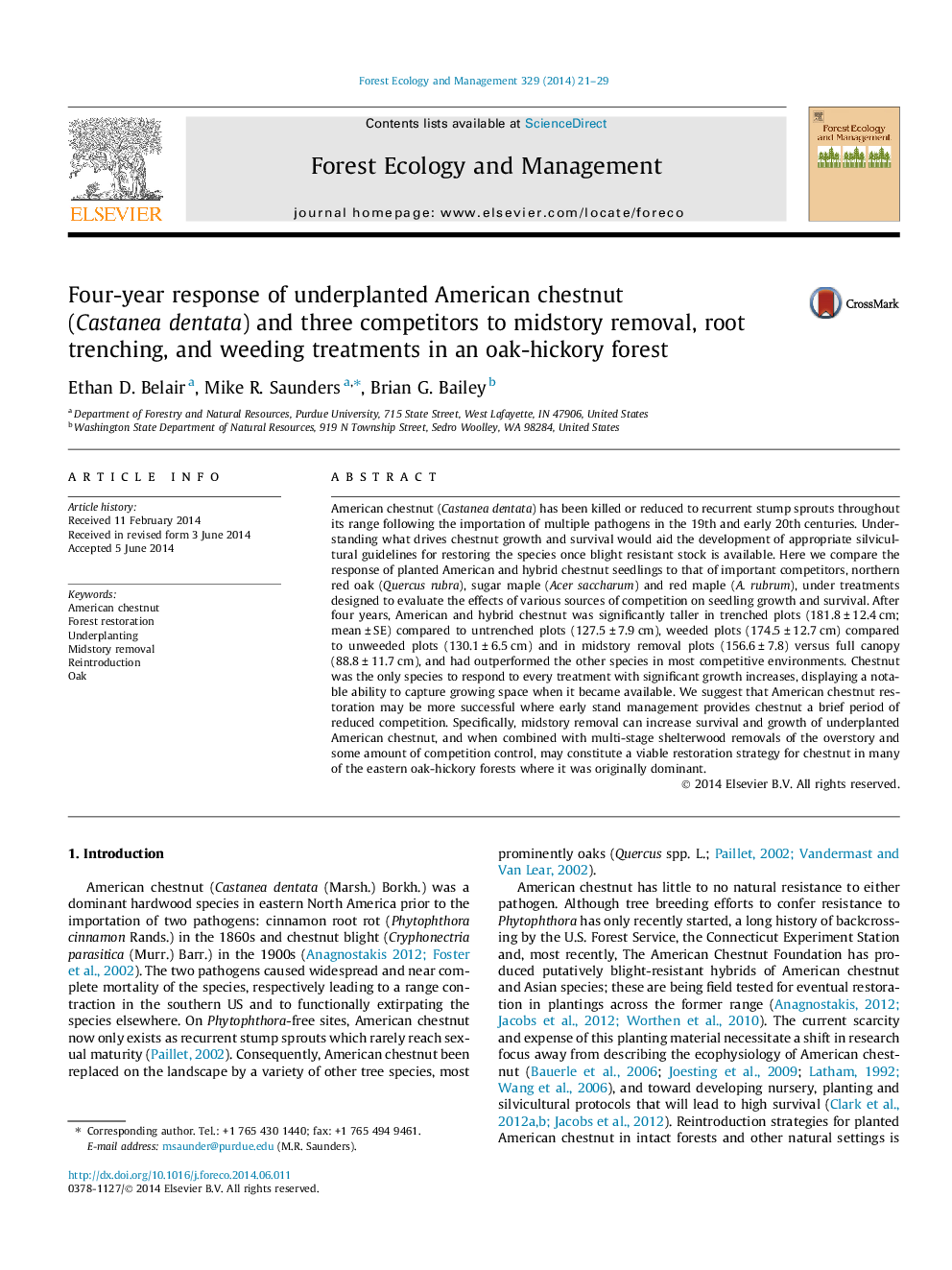| کد مقاله | کد نشریه | سال انتشار | مقاله انگلیسی | نسخه تمام متن |
|---|---|---|---|---|
| 6543402 | 159190 | 2014 | 9 صفحه PDF | دانلود رایگان |
عنوان انگلیسی مقاله ISI
Four-year response of underplanted American chestnut (Castanea dentata) and three competitors to midstory removal, root trenching, and weeding treatments in an oak-hickory forest
دانلود مقاله + سفارش ترجمه
دانلود مقاله ISI انگلیسی
رایگان برای ایرانیان
کلمات کلیدی
موضوعات مرتبط
علوم زیستی و بیوفناوری
علوم کشاورزی و بیولوژیک
بوم شناسی، تکامل، رفتار و سامانه شناسی
پیش نمایش صفحه اول مقاله

چکیده انگلیسی
American chestnut (Castanea dentata) has been killed or reduced to recurrent stump sprouts throughout its range following the importation of multiple pathogens in the 19th and early 20th centuries. Understanding what drives chestnut growth and survival would aid the development of appropriate silvicultural guidelines for restoring the species once blight resistant stock is available. Here we compare the response of planted American and hybrid chestnut seedlings to that of important competitors, northern red oak (Quercus rubra), sugar maple (Acer saccharum) and red maple (A. rubrum), under treatments designed to evaluate the effects of various sources of competition on seedling growth and survival. After four years, American and hybrid chestnut was significantly taller in trenched plots (181.8 ± 12.4 cm; mean ± SE) compared to untrenched plots (127.5 ± 7.9 cm), weeded plots (174.5 ± 12.7 cm) compared to unweeded plots (130.1 ± 6.5 cm) and in midstory removal plots (156.6 ± 7.8) versus full canopy (88.8 ± 11.7 cm), and had outperformed the other species in most competitive environments. Chestnut was the only species to respond to every treatment with significant growth increases, displaying a notable ability to capture growing space when it became available. We suggest that American chestnut restoration may be more successful where early stand management provides chestnut a brief period of reduced competition. Specifically, midstory removal can increase survival and growth of underplanted American chestnut, and when combined with multi-stage shelterwood removals of the overstory and some amount of competition control, may constitute a viable restoration strategy for chestnut in many of the eastern oak-hickory forests where it was originally dominant.
ناشر
Database: Elsevier - ScienceDirect (ساینس دایرکت)
Journal: Forest Ecology and Management - Volume 329, 1 October 2014, Pages 21-29
Journal: Forest Ecology and Management - Volume 329, 1 October 2014, Pages 21-29
نویسندگان
Ethan D. Belair, Mike R. Saunders, Brian G. Bailey,